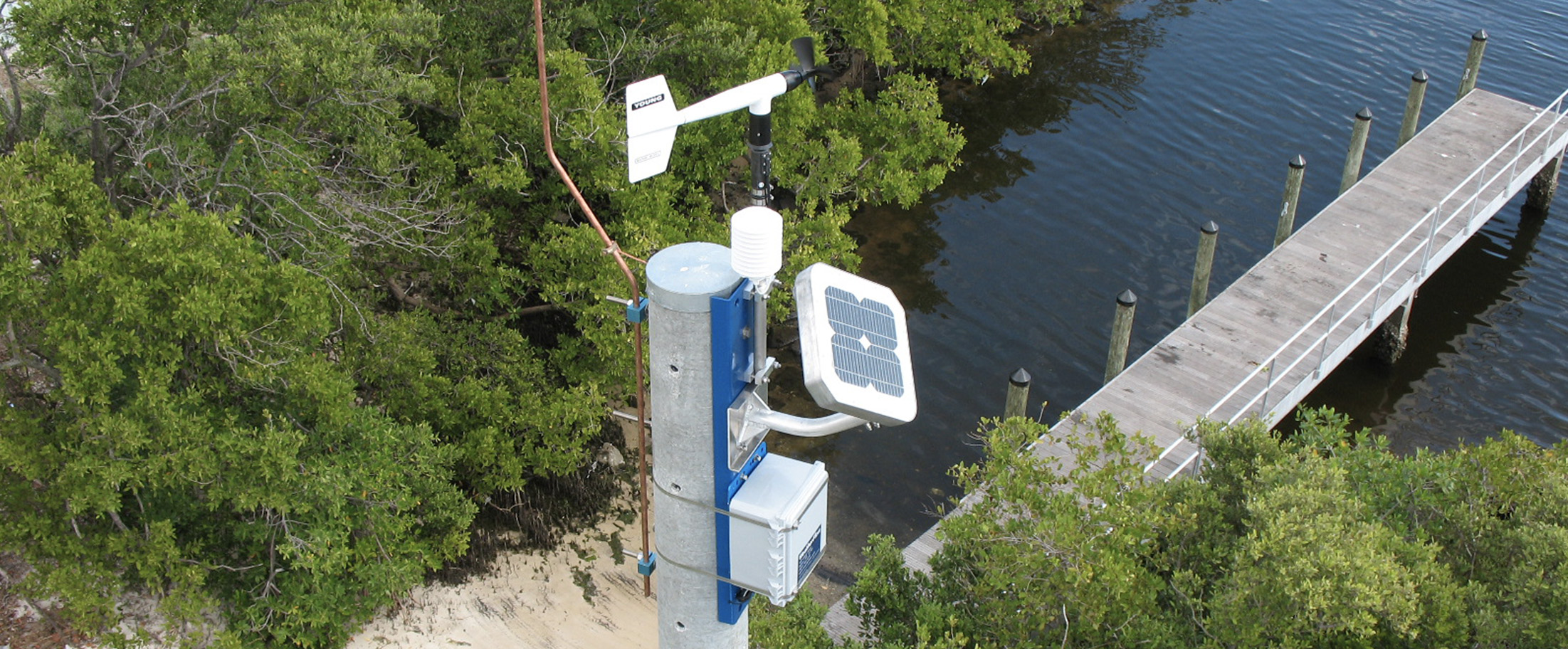HurrNet – The WeatherFlow Hurricane Network
see also: Hurricane Risk Transfer
Initiated in 2007 as a subset of the WeatherFlow ProNet, the WeatherFlow Hurricane Network (HurrNet) includes 100 specialized weather stations, placed near coastal urban concentrations. These stations are specifically designed to withstand the conditions associated with a landfalling hurricane. With specialized instruments and mounting structures we guarantee to our customers that the network will have less than a 1% failure rate in surviving and recording winds up to 140 mph.
These stations are fully self sufficient – no external power or communications devices are needed. The HurrNet was initiated in response to emerging needs for better and more complete storm data from the fields of civil engineering, emergency management, hurricane research, risk mitigation, and risk transfer.

– BRIG. GEN. DAVID L. JOHNSON, USAF (RET.), FORMER DIRECTOR OF THE NATIONAL WEATHER SERVICE
The Hurricane Network has proven itself repeatedly, starting with Hurricane Ike in September 2008, which made landfall on the Texas coastline with wind gusts over 110 mph, and again in 2018, when the network measured wind gusts of 105 mph in North Carolina with Hurricane Florence. In 15 years of operation, all WeatherFlow Hurricane Network stations in the vicinity of every landfalling hurricane or tropical storm region showed a 100% success rate, an unprecedented feat.
From its inception, the integrity of the data collected by the Hurricane Network has been paramount. From the data logger to the central data center to final archival storage, utmost care has been taken to record and preserve accurate and unadulterated wind observations. To help ensure this, industry best practices are employed in the areas of security, load balancing, fault-tolerance and redundancy.
Data Logger- The Scylla data logger is designed to store up to a year’s worth of data in non-volatile memory. If communications go down during an event, weather data will continue to be collected and safely stored locally. The data will then be transmitted to the central data center as soon as communications are restored. In the unlikely event that communications are not restored in a timely manner, data can be manually recovered from the data logger by a field technician. Moreover, even if the logger were to be separated from its tower or pole, the data collected will still be intact.
Weather Station Security – The Hurricane Network towers and poles on which the sensors and data loggers are mounted have been made as physically secure as practical. All tower locations are behind locked gates and/or barbed wire fences, and in all cases the equipment is mounted at least ten meters above ground level.
Under normal conditions, weather data is transmitted in near real-time via cell modem. Data transmissions are encrypted over the air, with each discrete observation record validated by a checksum. If an individual transmission fails, it is re-transmitted at a later date.
Central Data Center – The observation data arrives at the central data center on one of several machines in a cluster of processing servers. From there, the raw data and communications are logged to a robust, fault-tolerant file server. Next, raw data is inserted into a database for easier reporting and redundancy. Finally, the raw data is processed through a strict set of quality control and reduction algorithms, and these processed data sets are stored in a separate database for easy presentation on our websites in map and graphical formats.
Data Center Security – Physical access to equipment at the data center facility requires technicians to pass multi-layer security control procedures. Entrance to the facility requires a security badge scan and biometric palm-reader scan. Inside the facility a combination door lock must be opened to gain access to Hurricane Network IT hardware. Staff monitors physical access 24×7 by closed-circuit video and alarms. The internal network at the data center is protected by a firewall and intrusion detection/prevention hardware appliances. Remote administration is done through secure encrypted terminal software over a secure encrypted hardware-level VPN tunnel. Software security is monitored through a suite of custom integrated host-based intrusion detection systems. The latest security scanners are used to monitor open ports, file system changes, and scan for known vulnerabilities.
Final Archival Storage – The data is regularly archived offsite by compressing and transmitting the raw logs to a geographically separate facility through a secure, encrypted VPN tunnel. The data is stored automatically on hard drives and periodically written to removable optical media.
